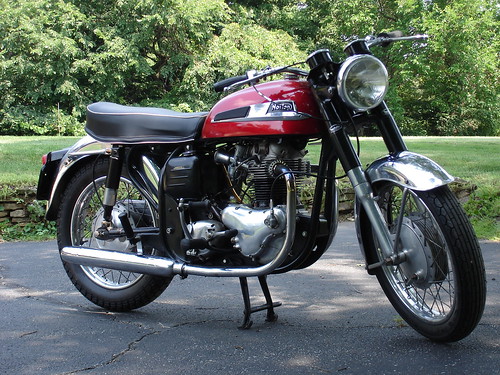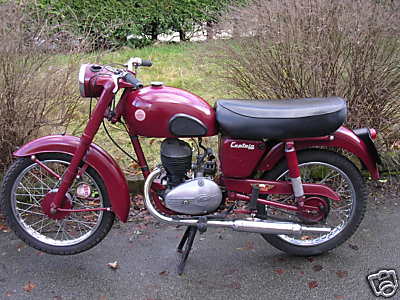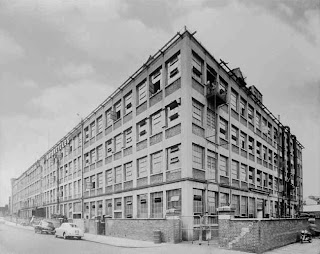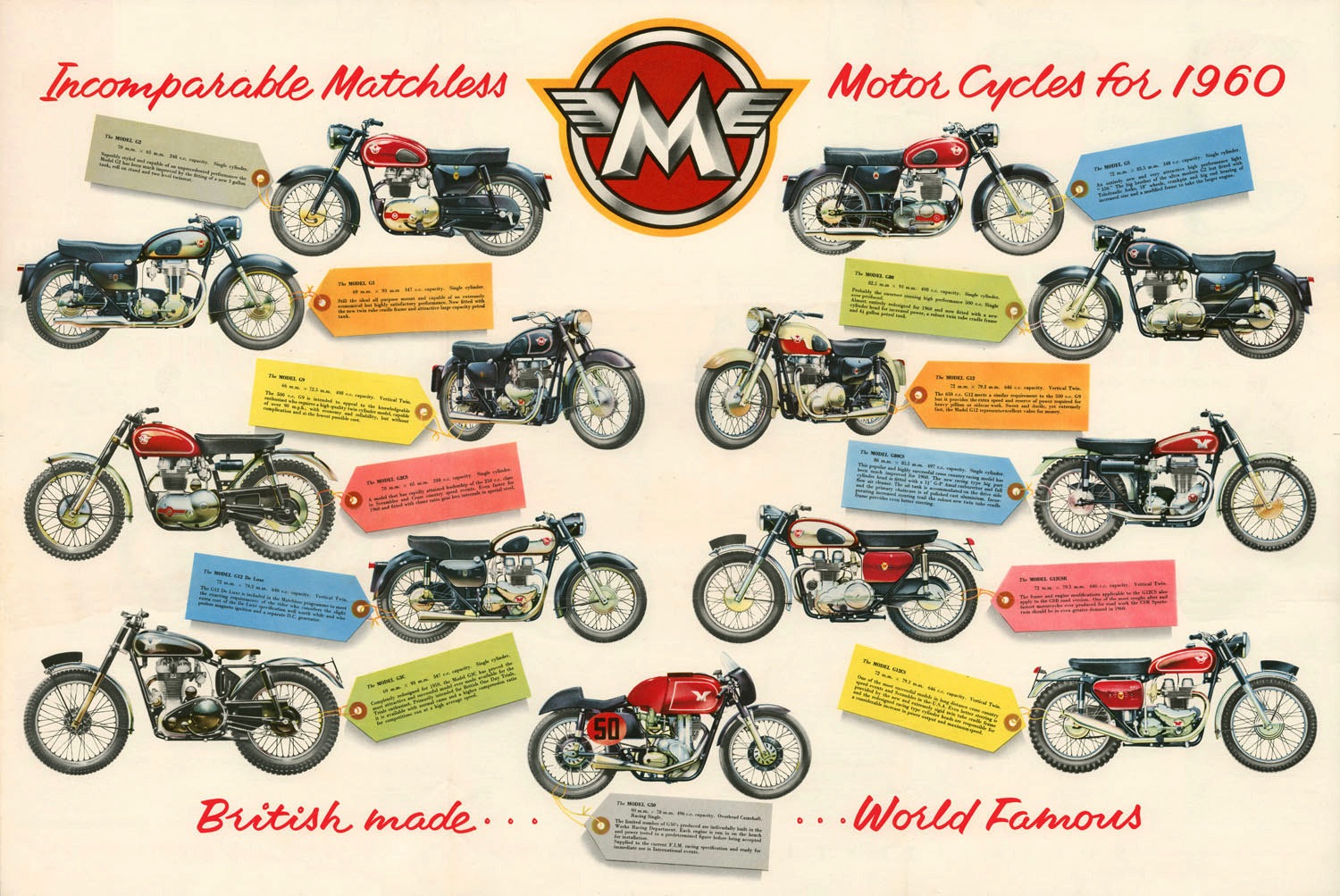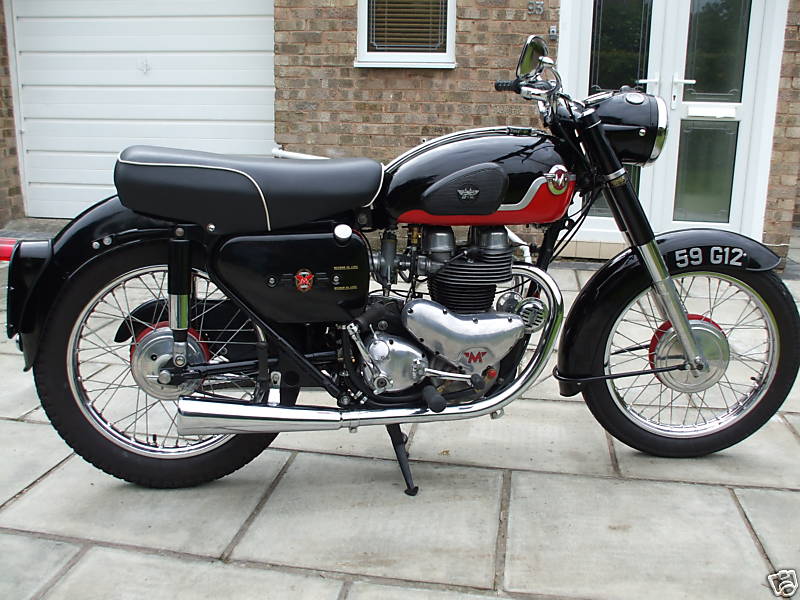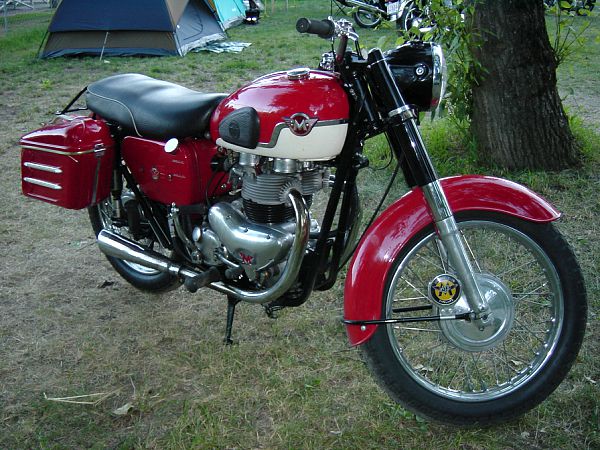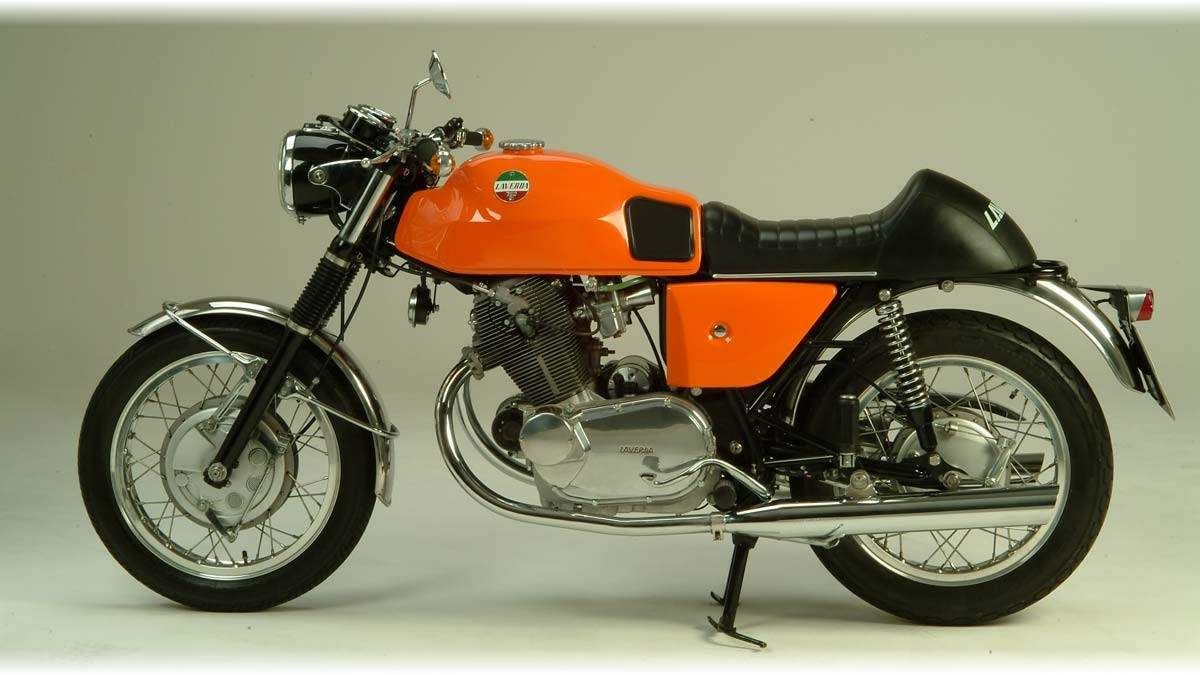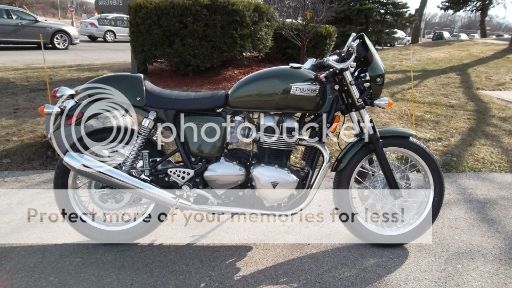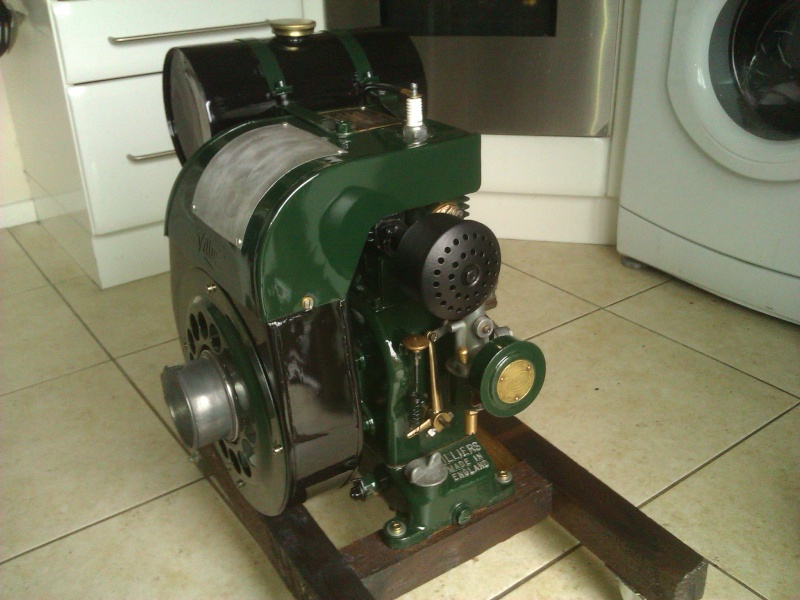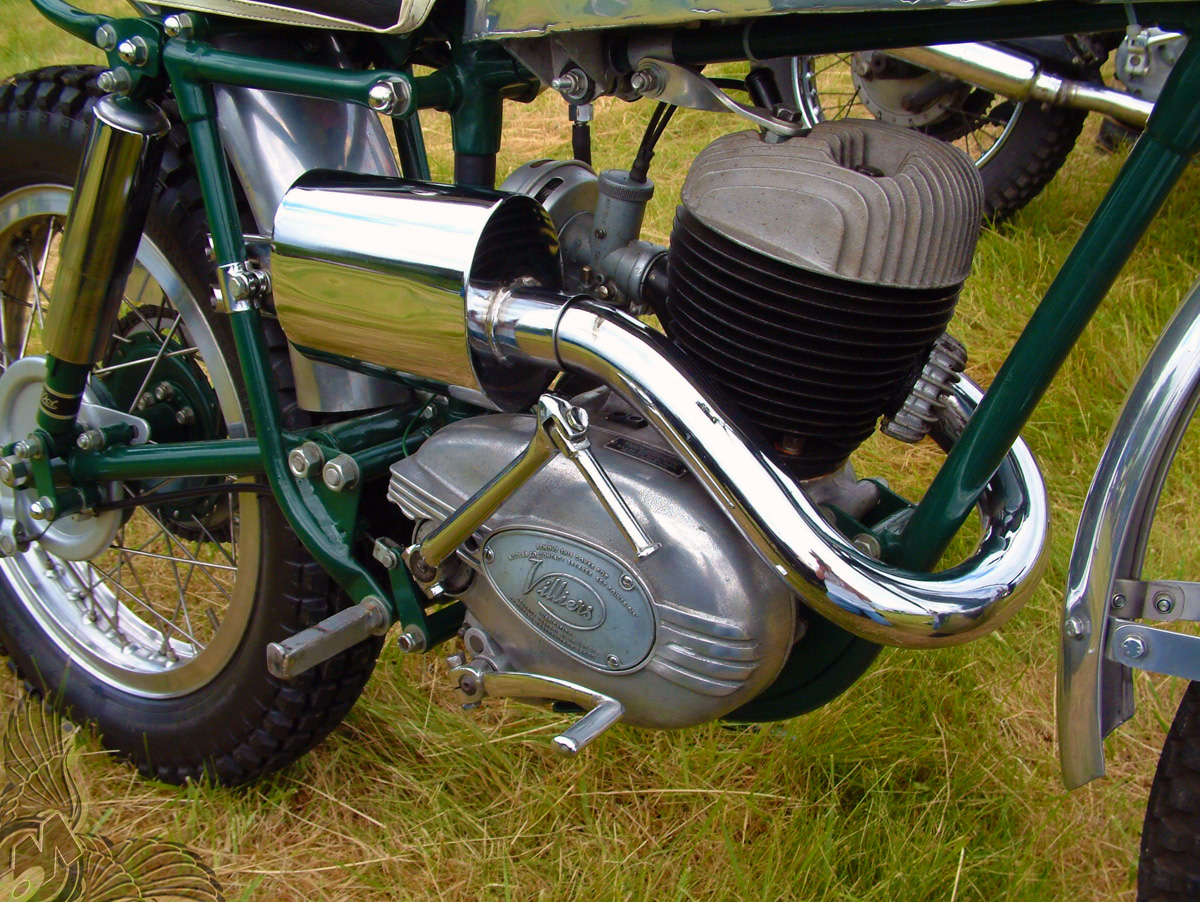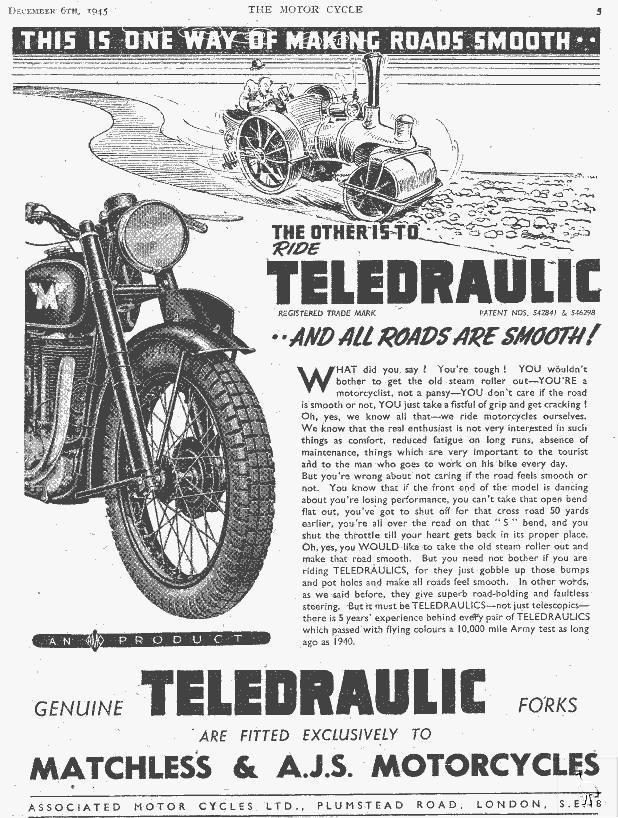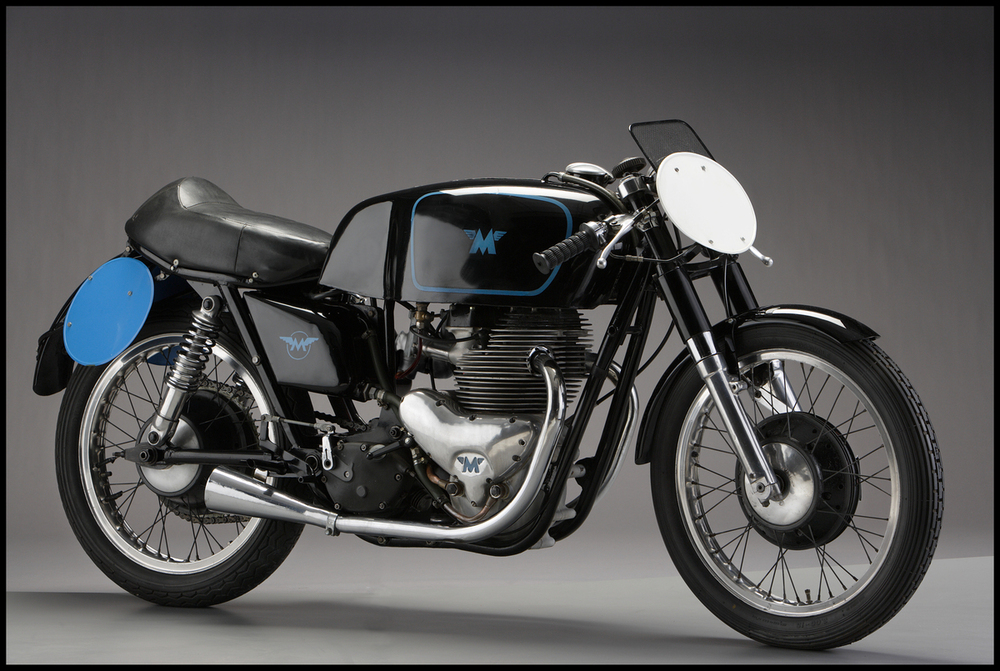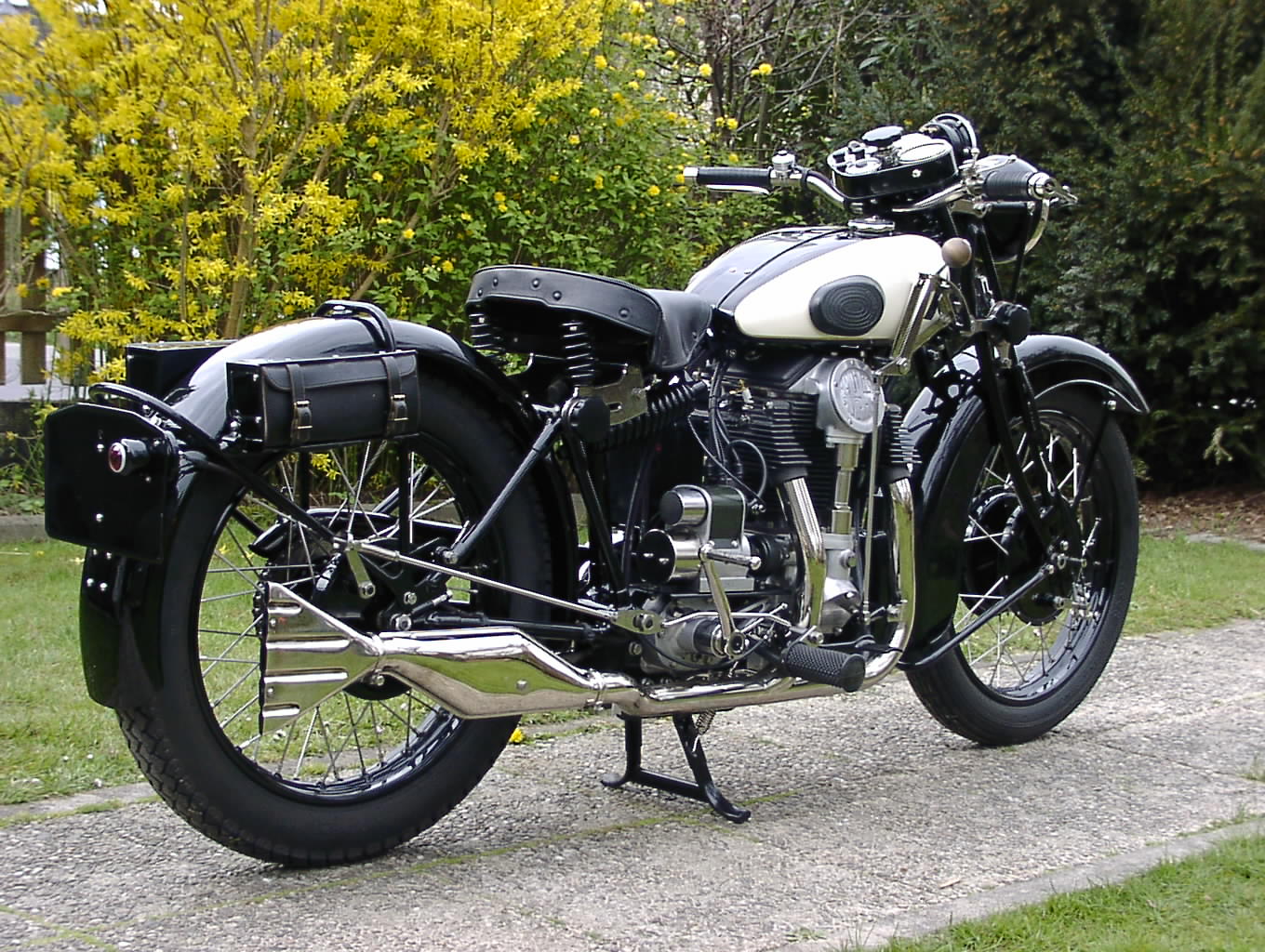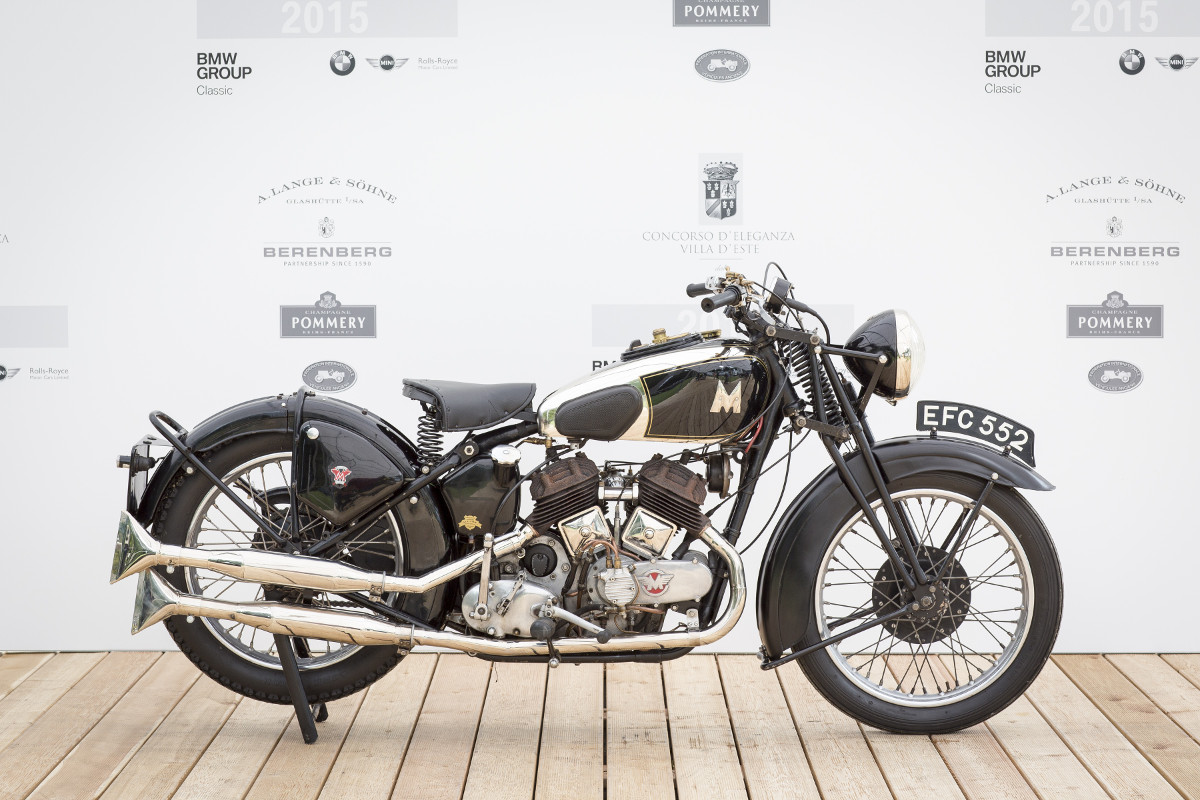I agree with the doing the "Pontiac thing" to AJS. Most of the AJS bikes were identical the the Matchless bikes, and only served to dilute the Matchless brand name.
One other thing thing that might have helped Matchless survive longer, was if they had tried to produce more, performance oriented models in the 60s. Other than the single cylinder G80 based models, they really didn't have any other performance oriented models, and as it was, the G80 based street bikes were not that common (especially the production racer versions), and were getting long in the tooth (performance oriented single cylinder streetbikes had pretty much gone out of vogue by the mid 60s).
The dirt bike version of the G80, was a pretty decent bike, but would have probably only been good until the late 60s, or early 70s at best, as a model, due to the arrival of larger displacement two stroke engined dirtbikes (which were lighter [weight reduction is good in dirt bikes - less mass to wrestle with, when trying to keep a bucking motorcycle under control], and more powerful).
IMO, in the short term streetbike-wise, refine to the quality of the current models to Japanese streetbike levels (get rid of the oil leaks), and increase the performance of the 2-cylinder Matchless street machines (they were basically configured as commuter bikes - not so cool in the 60s, when motorcycles in England, were no longer seen as the primary means of transportation, but as sport/leisure machines for having fun on [a mentality that served Honda well in the US market]). Long term, do what Triumph missed the boat on (when it blew off the 4-cylinder prototype in 1964) - develop a 4 cylinder, or even a 3-cylinder machine (but as a well engineered engine design - not a quick and dirty grafting on of an extra cylinder onto a 500cc twin - like the Trident/Rocket 3 seemed to be), and do it by 1968. This will hopefully avoid the unpleasant surprise, that Triumph, Norton, and BSA experienced, when Honda wowed the bike buying public with the 4-cylinder CB750 in 1969, which helped to make twin cylinder motorcycles seem passe as performance machines by the mid 70s, resulting in sales losses, and causing the death of the remaining British motorcycle manufacturers by 1982.
Dirtbike-wise - long term, either bite the bullet, and develop two-stroke powered dirtbikes (not using the mediocre at best Villiers 2-stroke engine, that the British motorcycle industry seemed to be in love with), or do like Triumph and Norton ended up doing - get out of the dirt bike market, using the money saved by doing so, to help bolster the street bike line.
Considering that the movers and shakers of the British motorcycle industry really weren't interested in putting serious money into motorcycle development (partly due to a lack of funds caused by bad business deals, and a desire to get as much profit as possible on the cheap), it's doubtful that any real effort would be made (beyond cosmetic changes, relatively cheap fixes like the Trident/Rocket III; and Norton Commando [which was basically an offshoot of the Atlas, using a different frame to deal with the jackhammer vibration of the the 750cc engine], or making cheap, small displacement 2-strokes), to update the bikes (currently) made in the early and/or mid 60s, or develop genuinely new models. to help keep Matchless going.


